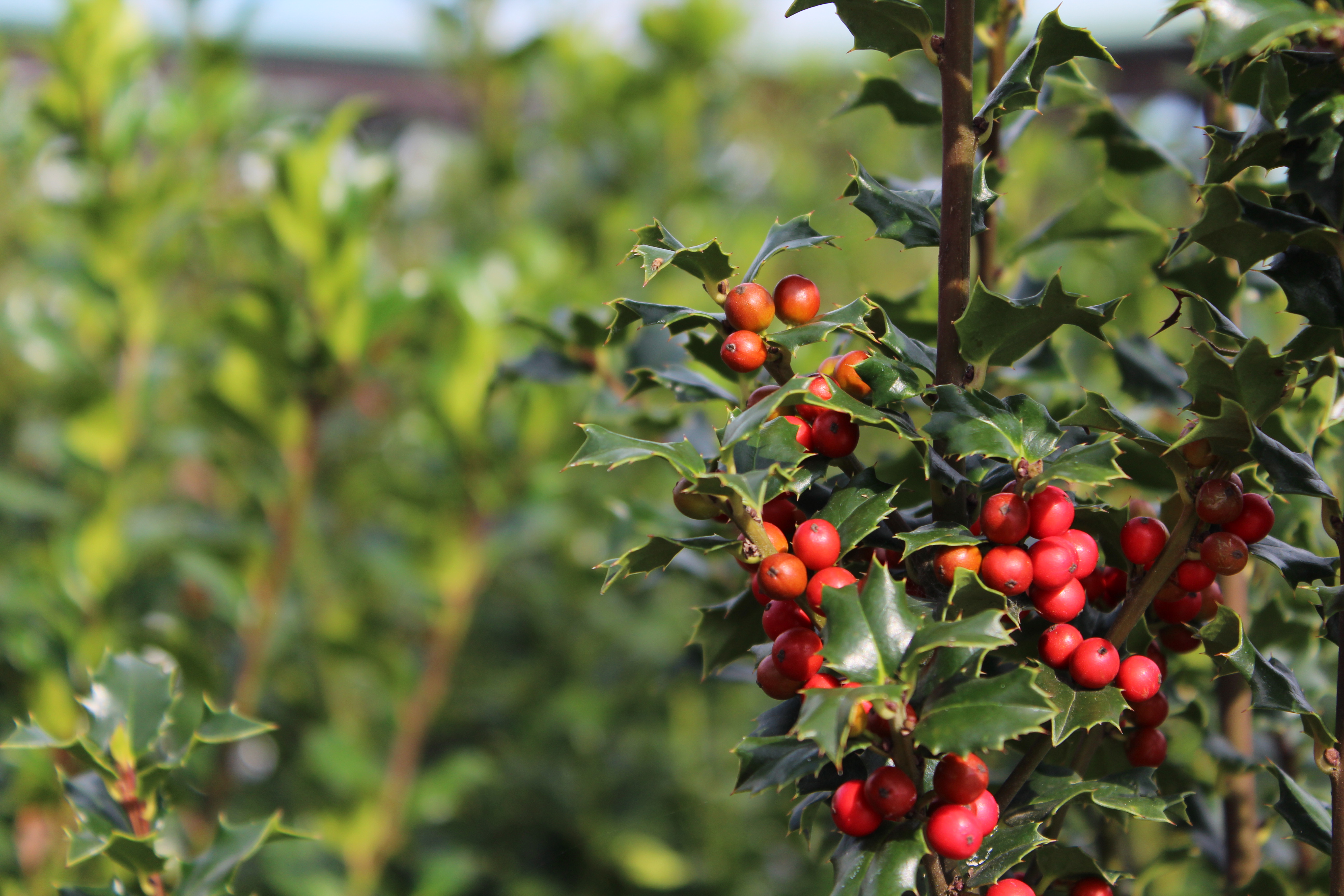Hollies

Where to Plant
Hollies in general prefer well-drained, slightly acid soil. They will grow well in either sun or part shade. Hollies should be protected from drying winter winds. There are hollies for most situations – Inkberry and Winterberry hollies will tolerate wet, poorly drained soil. Japanese holly will grow with more shade than most but is very sensitive to poor drainage.
Planting
Hollies may be planted any time of year, best times are spring, summer and fall. To ensure good drainage, hollies should be planted high, with some of the root ball above existing ground level, in a hole at least twice as wide as the root ball. Hollies like a loose peaty soil. Mix equal parts of peat moss, perlite, and soil from the planting hole is good. Add Hollytone to the planting mix at the rate of 1 cup per foot of the plants width. Once the plant is set in the planting hole with the root ball higher than the surrounding soil, fill in around it with the planting mix, packing firmly to eliminate air pockets. Mound soil up to the top of root ball. It is beneficial to water thoroughly with a root stimulator to encourage root growth. Mulch 1-2” deep over planting hole, with mulch pulled away from plant stem.
Watering First Season in Ground
Spring and summer plantings should be watered 2-3 times per week until fall, then once a week until Christmas. Fall plantings should be watered 1-2 times per week until Christmas. Plants may need to be watered as often as once a day if they are small or the weather is hot. Always check the soils moisture level before watering. It should be lightly moist several inches down. Following years you will need to water your hollies about once a week when we do not get a good soaking rain that week. Plants will need more water in hot summer and while in flower, and less in fall and winter.
Mulching and Pruning
A 2” deep mulch should be maintained at all times over the root area of the plant. This keeps the soil cool and moist, helps control weeds and protects roots in winter. Most hollies are very adaptable to pruning; pruning can be done anytime after new growth hardens off in spring through mid August. Don’t prune in the early fall or new growth may be too tender to survive hard frost. Many people like to take clippings at Christmas and this is a good time if the pruning is not extreme. American holly is best pruned during the winter since the berries occur on the current years growth.
Winter Care and Ensuring Berries
Apply several extra inches of loose mulch around base of plant after ground freezes to protect roots. In spring this should be removed in stages as weather warms. Plants continue to use water – don’t forget to water during warm spells. Plants that are exposed to wind or strong sun need extra protection. Burlap screens erected around plants will protect them from wind. Never cover plants with plastic. “Wiltproof” sprayed on the foliage will help protect your plants from drying winds. If you are growing hollies for their ornamental berries you will need to ensure that there are appropriate male pollinators for the female berries. Males can be planted anywhere Within 1/4 mile of females for excellent berry sets. A proportion of one male holly to 6-10 compatible females is good.
Types of Hollies
Japanese Hollies usually have smaller smooth leaves that look more like a boxwood leaf than a “typical” holly leaf. They are normally compact, low, and slow growers. They prefer a moist, light, slightly acidic soil and will grow in sun or shade. They work well as foundation plantings, rock gardens, and as low hedges.
Blue Hollies
Generally have deep blue-green leaves that are more “typical”. They are hardy and vary in form from spreading to pyramidal. They work well as foundation plants or in borders with needle-type evergreens. They prefer moist, slightly acidic soils and sun to shade. There are males and females with the females getting red berries in the fall that persist through the winter. You need to have a male in your yard for the female plants to get berries.
Inkberry
Has smooth, small leaves. It prefers moist, acidic soils, although it grows well in wet soils. Full sun or shade is fine. They take shearing well and are excellent as foundation plants, mass plantings, and hedges.
Winterberry
Is a deciduous holly. This type of holly does very well in wet, acidic soils. It grows in sun or partial shade. The winterberries are a great naturalized plant and also for problem wet areas. The winter is when this plant is at its best because that is when the berries are seen on the leafless plants.
